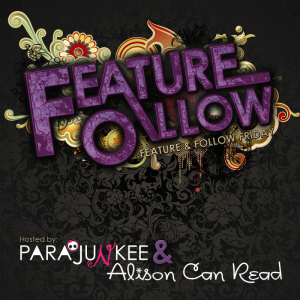Blog Talk: Identifying your audience and making changes to improve your readership
| Who is reading your blog? www.thebookcove.com |
Are you aware of your demographics? Who is sharing your posts? What kind of posts are getting the most attention and who is driving that attention?
If you want your blog to continue to progress or move in a certain direction, then these are questions that you must answer at some point. Your generic blog stats on Wordpress or Blogger may not provide accurate or extensive answers to these questions, but there are external sources that you can use to identify these; one being Google Analytics. This isn't meant to be a post on how to monitor blog stats per se so I will not go into detail about the variety of trackers out there. Just know that using one outside of your generic blog stats feature is a good idea.
So back to the question -- who is reading your blog? Does it appeal to a certain age group or -- as the case is for book bloggers -- a subset of bibliophiles? Which social media site is driving the most readers to your site?
If you want your blog to progress, then you must identify the places to focus your attention as well as the places to diversify content.
When I first started, I was solely blogging reviews of new adult romance books. It was in the midst of the new adult rise in popularity (unbeknownst to me) and that is what drove initial interest in my blog; it was appealing to the 18-30 year-old demographic of readers. New adult romance was/is not my only reading interest though, and I started to branch out in other genres and reviewing more adult books. Eventually I was classifying my blog as a "new adult and adult" book review site.
This change brought in new subsets of readers and broadened the age demographic. The reasoning is logical; the more variation in content, the more variation in readers.
Changing the demographic was not my only focus though. I wanted to identify which posts were receiving the most attention and why.
It's no surprise that book reviews aren't exactly comment drivers. People come and read them, but do not necessarily comment on them or widely share them. Again, this makes sense. Unless someone has read that book or author and has a strong opinion about a review, then they really don't have a reason to leave a comment or drive discussion for other visitors.
The reviews that did pull in both visitors and comments were those that had discussion questions posted at the end.
Visitors may not have anything to say on the author or book specifically, but they probably have thoughts on a certain book theme or plot development style.
There was a noticeable difference in reader response when I'd post discussion points directly in the reviews versus when I posed questions at the end; the latter being more effective.
What I found is that people respond to direct questions rather than "hidden" statements that were meant to drive discussion. I can write about my thoughts on a certain plot style all I want, but unless I specifically ask people what their thoughts are, they are not as likely (or willing) to pick up on those "hidden" statements-meant-as-questions that were embedded throughout the review.
If you really want to broaden your readership, then diversifying the types of posts is key.
Sticking solely to book reviews or a certain genre will not necessarily hold your blog back. Many people choose sites to follow because they know they can depend on those sites for very specific information. If you can build off of a niche, then your blog will progress. But building off of a niche requires strict dedication, which is hard if you really want a more all-inclusive blog.
If your posts appeal to a variety of age groups or genres, then extending your content beyond reviews can be beneficial. Specific reviews attract a more focused audience while posting on more discussion based topics provides a common ground for all readers. The same can be said for author spotlights and the like:
Posting a fairly generic author spotlight with a quick background and book blurb will attract certain readers, but including an interview or guest post will appeal to a wider variety of readers.
In summary, if you really want to expand your blog beyond a focused group of readers, then you have to identify the people that you are not reaching and find ways to reach them. Easier said than done. But with a little stats tracking and trial-error you can start to identify the strong and weak areas of your blog. This blog has moved from a new adult romance review site, to a new adult and adult romance review site, to a book review site, to a book site. It has evolved as my tastes and thoughts have changed and I've made sure to track how my readers have ebbed and flowed through those changes. Now I feel like my blog is in a pretty good place and still progressing.
The tips covered in this post are all from personal experiences and while they're all pretty logical, it all begins with the first step:
- Use an external stats tracker to identify demographics
- Identify your most interactive posts and read comments to identify what struck your readers the most about that post
- Build off from that
- Post questions rather than always leaving readers to infer their own
- Go beyond reviews
- Provide a common ground
- Continue to monitor demographics


Comments
Post a Comment